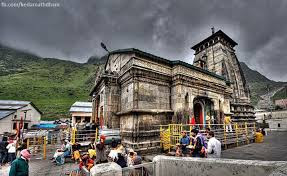The Realisation of the Absolute :4- 2- 6.

Chapter 4: The Nature of Reality : 2 -6. 2. Brahman as Consciousness or Intelligence -6. It is only in deep sleep that we practically become one with the Absolute. But the presence of ignorance, the store of the potential objective forces existing in an unmanifested state, prevents us from having the experience of Brahman. The unmanifest inert condition is not Reality. Reality is dynamic Consciousness; yet, it is the highest tranquillity. It is the unimaginable fourth state, which includes and transcends the other three states. The Real sees not and knows not anything; It is seeing and knowing itself; “It, the Seer and the Knower, has no interruption of seeing and knowing, because it is Indestructible—there is nothing second to and distinct from it, for it to see and know.” “Even as a lump of salt has no distinguishable in or out, and consists through and through entirely of the essence of savour, so in truth this Self has no in and out, and consists through and























